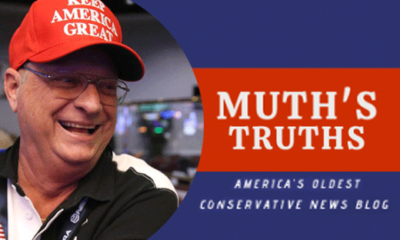(Abigail Sutton | Primary Care Optometry News) – A major goal from the recent FTC workshop on the Contact Lens Rule was to evaluate changes in the contact lens marketplace that may create opportunities to obtain lenses safely and at competitive prices, according to Thomas B. Pahl, acting director at the Bureau of Consumer Protection.
Contact lens vendors, clinicians, regulators and eye care industry professionals gathered to discuss concerns surrounding prescription release and verification, health and safety issues, competition, consumer choice and market disruptions at “The Contact Lens Rule and the evolving contact lens marketplace” workshop in March.
Despite state laws requiring some form of prescription release, Congress determined that many consumers were still not receiving copies of their prescriptions and were having a difficult time obtaining lenses from third-party sellers due to prescription verification obstacles, Pahl said.
“Problems with prescription release and verification hampered competition and limited consumer ability to comparison shop,” Pahl said at the workshop.
Congress also had concerns that some vendors were selling lenses without requiring a valid prescription, which the Fairness to Contact Lens Consumers Act of 2003 was intended to remedy, he said.
In September 2015, the FTC sought public comment on the rule to determine how it was functioning.
Some commenters said the verification requests and, primarily, “robocalls,” were a burden for eye doctors.
The comments also indicated that, after a decade, many doctors were still not releasing prescriptions, Pahl said. As a result, the FTC proposed to amend the rule to have consumers receive a signed acknowledgment form confirming receipt of the prescription.
“Prescribers would have to save the signed form for 3 years, leading to an increase in prescription release, enhanced patient choice, flexibility and reduced verification errors,” he said.
In response to the proposed amendment, the FTC received more than 4,000 comments, including 800 from doctors alone.
Sellers weigh in on prescription verification
A contact lens vendor may sell lenses only in accordance with a prescription that is presented directly to the vendor or verified by direct communication, attorney Elizabeth A. Delaney, of the Bureau of Consumer Protection, said at the workshop
A prescription is considered verified if the prescriber confirms that it is accurate by responding to the seller, if the prescriber informs the seller that the prescription is inaccurate and provides the accurate information, or if the prescriber fails to communicate with the seller within 8 business hours after receiving the request – known as passive verification, according to the Contact Lens Rule.
Cynthia Williams, general counsel at 1-800 CONTACTS, said the company has current prescriptions on file for 40% of their orders.
For verification, 1-800 CONTACTS uses a system called human-initiated voice response. Each call is initiated by a live customer service agent who confirms the call is received by the right person and office. Next, a recorded voice is used to convey the prescription and patient information, “because it is more likely to be accurate and more reliable,” Williams said at the workshop.
She said prescribers often hang up on the calls rather than taking advantage of the option to hold or to have the system call them back. Of the 60% of 1-800 orders going to verification, the majority are passively verified.
“We would like prescribers to understand, while the call is coming from 1-800, it is their patient who is asking for them to take 2 minutes to verify their prescription,” Williams said.
Jennifer Sommer, director of U.S. ethics and compliance at Walmart Inc., explained that if a patient requests contact lenses from Walmart and does not have a prescription on hand, the patient fills out a form. Opticians will then contact the prescriber’s office to confirm the fax number and fax the form to the prescriber. If the prescriber does not respond to say it is invalid or incorrect, the opticians will dispense the lenses.
Sommer said Walmart completed an informal survey among 40 vision center managers in 15 states, where they found the verification process does not serve patients in the way they want.
Most opticians will call the prescribing office while the patient is in the vision center, to offer better service, she said.
“They find that is more effective to ensure a valid prescription and that they have all parameters needed,” Sommer said.
Shaun Schooley, vice president of global marketing technology at CooperVision, discussed its contact lens reorder system, LensFerry, which allows a prescriber to offer their patients an email-, web- and mobile-friendly reorder capability through the prescriber’s EHR data.
“Technology has come a long way,” Schooley said. “In verification, errors can be introduced because of verbalization of complicated parameters and data points … the FTC should take an open-minded attitude to digitize these things … that would be a positive step forward.”
Verification a ‘one-way system’
David A. Cockrell, OD, a private practitioner, chair of the American Optometric Association Advocacy Group and past AOA president, said the verification process as it stands now is ineffective, does not work and is a one-way system.
“Every doctor gets contacted virtually every day by a seller with a prescription that is expired or incorrect. When we try to re-contact the entity that sent it, there is no way to do that. It’s a one-way issue,” Cockrell said at the workshop.
He said that with a pharmacy, in terms of any question about a medical prescription, “I’m able to get hold of them. I can’t get hold of a contact lens reseller. No, I don’t think the system works.”
“Every optometrist has a list of patients who have received contact lenses from 1-800 CONTACTS with expired prescriptions, who have been sent lenses before the prescription is verified and who receive incorrect or substitute lenses,” clinician Jeffrey Sonsino, OD, FAAO, who did not attend the workshop, said in an interview with Primary Care Optometry News. “We also have a list of patients who have suffered harm due to these practices.”
Cockrell said that some retailers, such as Hubble, say to get back to them within 48 hours, but the rule is 8 business hours.
“It’s intentionally misleading to a provider. There are a variety of problems,” Cockrell added.
Prescribers have no way of knowing whether the prescription was filled, he said.
Additionally, robocalls are often impossible to understand, he said, suggesting written requests to correct this issue.
Clinician Thomas L. Steinemann, MD, agreed that robocalls are an issue.
Steinemann said at the workshop that he receives five to 20 requests per week across the sites where he works in Ohio. He is a professor of ophthalmology, MetroHealth Medical Center, Case Western Reserve University in Cleveland.
“My surveys showed that up to 62% of passive verification requests are incorrect, with 50% of requests expired prescriptions,” Steinemann told PCON.
He said at the workshop that he sees four main sources of error with contact lens prescription verification: expired prescriptions; patients with no patient record; inaccurate prescription, such as errors in transcription; and people who are either not approved for a contact lens fitting, did not complete the fitting process or do not have a prescription and are trying to get one.
Steinemann and Cockrell agree that the patient name, address and date of birth should be used on all verification requests to quickly and simply locate a patient record.
They both suggest that requests take longer than 2 minutes, and prescribers should be allowed more time to reply.
Linda Sherry, director of national priorities for Consumer Action, said they polled contact lens wearers and found that one-third were not getting a copy of their prescription, and many were unaware of their right to the prescription.
Cockrell said every patient gets a copy of his or her prescription at his offices, and they use the EMR to confirm this.
“Every day we have a call from someone asking for a prescription, and it’s always someone we’ve given it to before, who has misplaced or lost it,” Cockrell said. “We look to see if the prescription is current and how many times we have given it to them. We want to track those numbers.”
Zachary McCarty, OD, chair of the AOA Quality Improvement and Registry Committee, said at the workshop that about one-fourth of optometrists have an EHR and have attested to the Meaningful Use program, according to CMS data.
“CMS has tried to put in place a program to push the adoption of EHRs,” he said. “Unfortunately, they made some errors and avoided looking at specialties and specifics in other nuances, like eye care. There are a lot of doctors that have walked away from EHR.”
McCarty’s referral-based practice has spent more than a year and a half working with its EHR vendor and with vendors his colleagues use, “and we are nowhere near where we need to be, to communicate electronically,” he said. “It is a very sorry state of interoperability affairs.”
A signed form vs. signage
To increase compliance with prescription release, the FTC has proposed requiring prescribers to obtain a signed acknowledgment from patients at the time the prescription is provided.
Joseph B. Neville, executive director at the National Association of Optometrists and Opticians (NAOO), who spoke at the workshop, told PCON that the group, “is not opposed to an acknowledgment form, but does not think it should be the only way to provide evidence of compliance with the rule.
“The NAOO is in favor of increased enforcement, but we suggested to the FTC that the prescriber be allowed to demonstrate compliance with the automatic release requirement by any of several forms of proof, including the form or other evidence of release,” he added.
Cockrell, who opposes the idea of an acknowledgment form, said that in addition to creating a record-keeping burden for doctors, the form could spur patient distrust and doubt. Instead, he recommends appropriate signage at the front desk to alert a patient to their prescription rights, just as government agencies require signage concerning their discrimination policy.
“I have no problem displaying a sign in my office notifying patients of their rights,” Sonsino told PCON. “It is the law, and patients have a right to know the law.”
Sonsino believes that a signed acknowledgment of contact lens release is a, “tremendous overreach of a governmental regulator.” He also suggested that patients would end up subsidizing the increased cost that would result.
“The burden this would place on a primary care optometrist has been calculated to be $18,000 per year,” he said. “In my practice, with the volume of contact lenses we prescribe, this would be more like $36,000 per year.”
Edward Chaum, MD, PhD, said at the workshop that much of the issue is an example of the growing pains as medicine moves from the paper era to the electronic health record era. He is a Plough Foundation professor at the University of Tennessee Health Science Center.
“Providing that information electronically to patients, so they can do it independently, [such as in a patient health portal app] takes away a lot of the pain being discussed here,” he said.
“The reality is that the patient owns his or her health information,” Chaum continued. “Doctors are the stewards of that information and we are responsible for saving it … the electronic format and the interaction of the patient with their information is where this discussion needs to go.”
New business models, market disruptions
Sightbox is a new service that Johnson & Johnson acquired in the second half of 2017. It connects patients who wish to order contact lenses with an eye care professional to get an annual comprehensive eye exam.
“We are learning that there is a growing need for consumers to gain access to health care, eye health products and services in a convenient way,” Peter A. Menziuso, president of Johnson & Johnson Vision Care North America, said at the workshop.
Sightbox will schedule an appointment with a provider and come back to the patient with the proposed date and time. After the exam is completed and a prescription is provided, Sightbox will alert the patient when the follow-up exam should occur, to ensure the patient is staying within a regular routine of eye health. Most patient-users have not seen a provider in a long time, he said.
Menziuso also commented that contact lenses are not interchangeable.
“A brand is not a brand is not a brand,” he said. “There are multiple parameters. When a doctor is [performing] that comprehensive eye exam, they’re making a determination [on] what’s best for that patient based on those multiple attributes that then guide them to a particular choice.
“Let’s not forget that these are Class II and Class III medical devices,” he added, “so this conversation about direct-to-consumer, going around an intermediary … we are in service to the doctor who is in service of the patient.”
Alex Bargar, director of clinical services at Simple Contacts, was also on hand to discuss this company’s technology.
Simple Contacts is a way for healthy, asymptomatic contact lens users who are happy in their current lenses to renew their prescription online and easily purchase replacement lenses, he said.
Patients provide medical history on the app or through the website. Then they record, in high-definition video, their eyes while wearing the lenses they want to renew. Next, they take a visual acuity test using their phone. Each exam is reviewed by an ophthalmologist or optometrist in that state who decides, based on the patients’ results and the medical history questions, whether they are appropriate for online contact lens renewal.
“It is common for our physicians to refer for in-person care,” he said.
He said the cost savings is significant, and the service is appropriate for underserved and rural communities.
Out-of-date regulation, state influence
“A lot of the problems with contact lens competition are that we have historical regulatory systems that haven’t been updated,” said Bob Hubbard, an assistant attorney general in New York who spoke only for himself, not his employer or any other attorney general, at the workshop.
He suggested an effort to update those regulations to provide opportunities for state regulatory systems to diverge from the usual practice and mandate that a manufacturer not be specified and the description of the product to be purchased is general enough to be satisfied by different brands.
Bargar is concerned with state-specific red tape in telemedicine efforts.
“We often feel like we are jumping through arbitrary hoops. State regulatory agencies will rope back control over something that the FTC and other federal agencies have weighed in on,” Bargar said.
In Texas, for example, Simple Contacts was unable to practice telehealth until Teladoc won a lawsuit against the Texas Medical Board, he said.
In Indiana, telehealth legislation passed a year ago allows telehealth, except to: prescribe abortion-inducing medication, opiates or contact lenses. The following year they reconvened and rolled back the restriction on opiates, but not contact lenses, he said.
“I see the state influence there as a mechanism to prevent the roll-out of technology instead of protecting the marketplace and consumers,” Bargar said.
Robert D. Atkinson, president of the Information Technology and Innovation Foundation, confirmed that it is often easier for companies to go to local legislators and exert influence. Few states have a council of economic advisors or an FTC-equivalent.
“It’s easier to capture state legislators; that has been the battleground to get their way,” he said. “We are in desperate need of a telehealth federal law or mandate.”
“I would like to see some major enforcement of the passive verification rules and punishment of companies who consistently show bad behavior,” Sonsino told PCON.
He concluded that the FTC failed to identify the true problems with the rule.
“The problem is not patients receiving their prescriptions,” he said. “The problem is contact lens resellers’ complete disregard for the passive verification rules.”
* * * *
Reference:
The Contact Lens Rule and the evolving contact lens marketplace workshop. https://www.ftc.gov/news-events/audio-video/video/contact-lens-rule-evolving-contact-lens-marketplace-session-1. March 7, 2018.
For more information:
Robert D. Atkinson is president, Information Technology and Innovation Foundation. He can be reached at ratkinson@itif.org.
Alex Bargar is director of clinical services at Simple Contacts. He can be reached at alex@simplecontacts.com.
Edward Chaum, MD, PhD, is employed by the University of Tennessee Health Science Center. He can be reached at: echaum@uthsc.edu.
David A. Cockrell, OD, practices at Cockrell Eyecare Center in Stillwater, Okla. He is a diplomate of the American Board of Optometry, a past AOA president and the chair of the AOA Advocacy Group. He can be reached at: dcockrell@cockrelleyecare.com.
Elizabeth A. Delaney is an attorney at the FTC Bureau of Consumer Protection. She can be reached at edelaney@ftc.gov.
Bob Hubbard is assistant attorney general at the New York Attorney General’s Office. He can be reached at Robert.hubbard@ag.ny.gov.
Zachary McCarty, OD, is chair of the AOA Quality Improvement and Registry Committee. He can be reached at ZMcCarty@southeasteye.com.
Peter A. Menziuso is president, North America at Johnson & Johnson Vision Care Inc. He can be reached at kpeter9@its.jnj.
Joseph B. Neville is executive director of the National Association of Optometrists and Opticians. He can be reached at joebneville@gmail.com.
Thomas B. Pahl is acting director at the FTC Bureau of Consumer Protection. He can be reached at tpahl@ftc.gov.
Linda Sherry is director of national priorities at Consumer Action. She can be reached at linda.sherry@consumer-action.org.
Shaun Schooley is vice president, global marketing technology at CooperVision. He can be reached at heather@mcdougallpr.com.
Jennifer Sommer is director, U.S. ethics and compliance at Walmart. She can be reached at jmsomme@wal-mart.com.
Jeffrey Sonsino, OD, FAAO, practices at Optique Eye Care in Nashville, Tenn. He is a diplomate in the American Academy of Optometry’s Cornea and Contact Lens Section.
Thomas L. Steinemann, MD, is a practitioner at MetroHealth Medical Center and professor at Case Western University. He can be reached at tsteinemann@metrohealth.org.
Cynthia Williams is general counsel at 1-800 CONTACTS. She can be reached at cwilliams@1800contacts.com.
Disclosures: Atkinson is employed by Information Technology and Innovation Foundation. Bargar is employed by Simple Contacts. Chaum reports that he serves as a consulting chief medical officer to the Welch Allyn RetinaVue Network and as a consultant to Rx Renewal LLC, an affiliate of 1-800 CONTACTS, which provided financial assistance for his travel and participation in the workshop. Cockrell, McCarty and Steinemann report no relevant financial disclosures. Delaney and Pahl are employed by the FTC. Hubbard is employed by the New York State Attorney General. Menziuso is employed by Johnson & Johnson Vision Care. Neville is employed by the National Association of Optometrists and Opticians. Schooley is employed by CooperVision. Sherry is employed by Consumer Action. Sommer is employed by Walmart. Sonsino reports consulting relationships with Contamac, Johnson & Johnson and Synergeyes. Williams is employed by 1-800-CONTACTS.
This article was originally published by Helio.com, April 2018







Facebook
Twitter
Pinterest
RSS